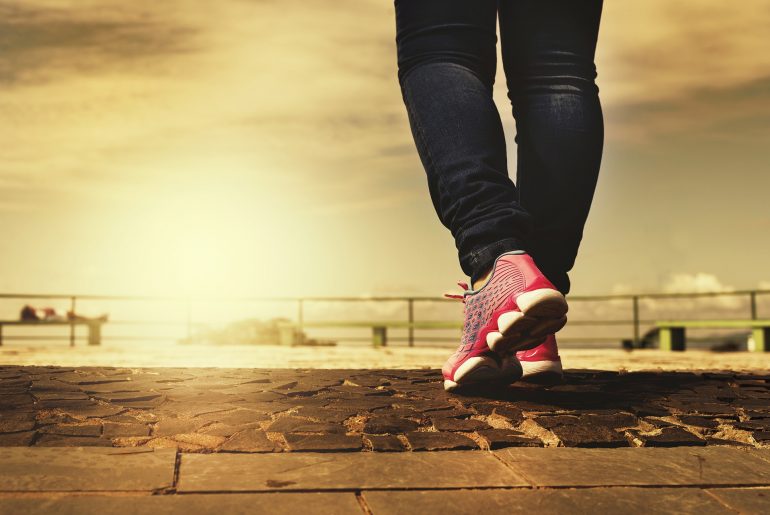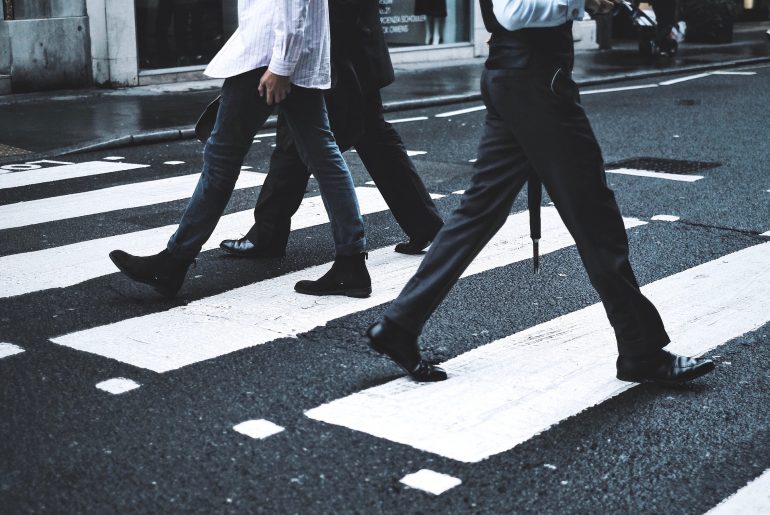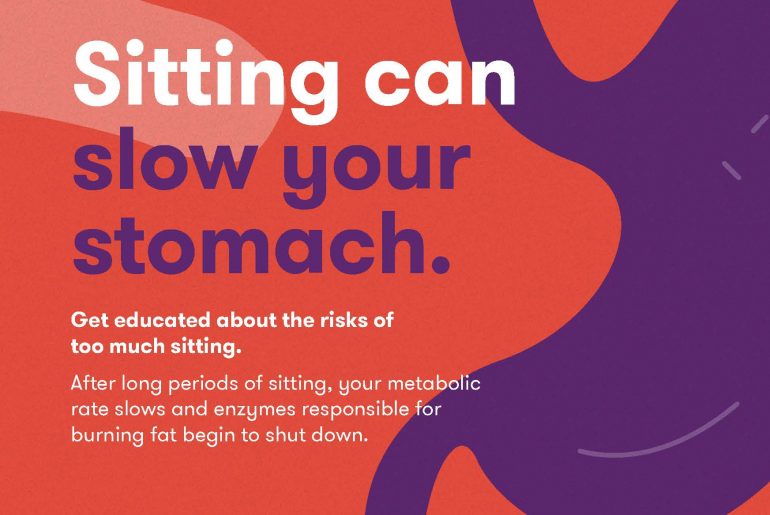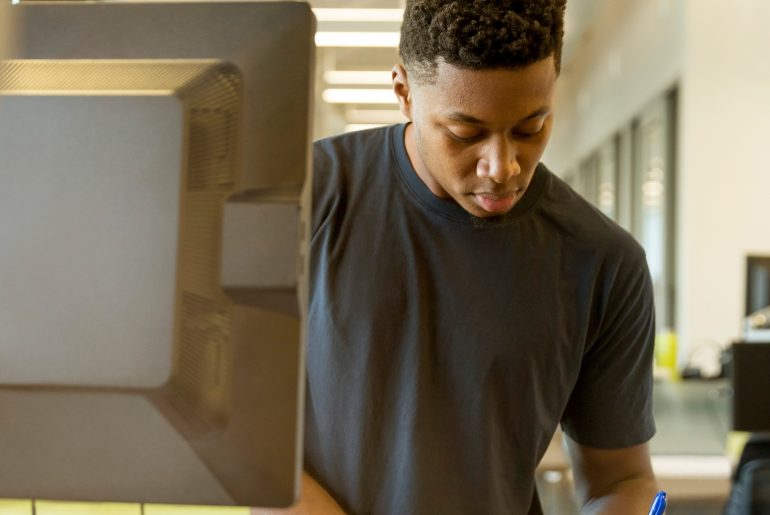Get Britain Standing’s page on costs of prolonged sitting for the employer has some surprising facts. The page breaks these down into three categories absenteeism, presenteeism, and costs to engagement and wellbeing. What is presenteeism you may ask? I’m sure we’ve all felt it before. I can recall showing up to work feeling “out of it.” Even when employees are present the tolls of prolonged sitting can impact the quality and quantity of work. Absenteeism is easier to quantify. Average sized employers (250 persons) loose an estimated 4800 GBP/week due to absences with all businesses forgoing a total of 15 billion GBP annually. Of this 1/3rd (5 billion GBP) is due to low back pain, an ailment directly related to sedentary behaviour. The financial boon of wellness programs in part accounts for their eager adoption overseas and here in Australia. Trades Union Congress (TUC) of Britain estimates that wellness programs can reduce absences by as much as 42%. Reorienting the workplace to support dynamic movement with sit-stand desks, walking meetings, and active breaks may seem daunting to employers but resources like Get Britain Standing and Australia’s own BeUpstanding have the tools to get your workplace started. This article was written…
How to BeUpstanding by Cutting the Commute
The 40-hour work week, a staple of modern office employment, is seldom questioned. In an article for the Canadian publication The Globe and Mail, author Cynthia McQueen asks us, in the age of the videoconferencing and interconnectedness though the internet of things why do we commute at all? The cost of a rigid 9-5 day is measured financially. The author cites a University of Guelph study that found a personal financial boon of between 8,800-23900 $CAD/year saved by eschewing the daily commute. Commuting, as the author points out also costs us time. While BeUpstanding Champions focus on harnessing the increased productivity of movement in the office, the time commuting by car to our places of work remains intractably sedentary. Should the saved commuting time of a flexible workplace be put towards movement the author points out, research shows a potential reduction in sick days by a stunning 27%. The Conference Board of Canada estimated that in 2012 alone workplace absences cost 16.6 billion CAD. In light of the mounting evidence it is no wonder that the majority of Canadian workplaces now offer some form of flexible work contract. With the mounting burden of evidence available to employers it isn’t hard…
The Goldilocks Zone for Movement
It takes no large leap of the imagination to see that the human body was not shaped for a life in an office chair, car, or couch. Our ancestors were habitual movers constantly engaging in mild to moderate exercise. That is all well and good you may say, but as westerners with lives dominated by sedentary behaviour exercise must be supplemented back into our lives. A recent meta-analysis on movement lays out guidelines for a “Goldilocks” zone of exercise for maximal health benefits. This approach bestows maximal benefit with as little as 50 minutes per week (equivalent to running just 5-6 miles). The study emphasised diminishing returns from daily high aerobic exercise in favour of more frequent low to moderate exercise such as walking or yoga. The study references of cohort of daily endurance athletes over the age of 45 who were measured to have an increased risk for cardiovascular events as compared to those with a more moderate activity profile. Key Take Aways: Sitting should be limited to 30 minutes at a time punctuated by a “brisk” 5 minute walk Use a sit-standing desk when possible to alternate postures regularly There is no upper limit for mild to moderate…
Health Benefits of Urban Green Spaces
A recent article from the BBC contained a shocking statistic that the average American spends “90% of their time indoors.” Though only a survey of the United States, it’s not hard to imagine that across the globe westerners are similarly confined to our homes or places of work. But why should this matter? The author Phillipa Fogarty cites decades of research summing up how time spent outdoors has beneficial impacts on our blood pressure and mental wellbeing while also making us happier and more engaged at work. All we need to do is spend time walking or moving in nature. But before you pack your bags and head for the hills, there is evidence that the same benefits can be gained from just five minutes. The article goes on to say that when compared to indoor “relaxation” training or having a view of the outdoors, the benefits of time outdoors are greatest with short daily walks. So spend a few minutes in a local park on your way to work, as a group as part of a BeUpstanding team, or on your lunch break and bring the benefits of the great outdoors into your own backyard. This article was written…
Benefits of Walking to Work
By Anna Rasmussen On the 4th October it was Diabetes Australia Walk to Work Day. Walking has become an integral part of my daily routine. I spend between two and ten hours each week walking to and from destinations including university or the hospital where I study, the weekend markets, or the shops. The World Health Organisation has acknowledged active transport as a way to improve global environmental and health outcomes. My motivations are primarily to benefit my physical and mental health, but walking has other benefits such as being non-polluting, posing little danger to others, saving money, and, perhaps mostly importantly, I enjoy it. I am, however, one of the minority in Australia that uses walking as their main form of transit. The 2016 Census found that 69% Australian commuters travelled to work by car, and another 5% as car passengers, while 9% used public transport, 1% cycled, 4% walked, and 4% used multiple methods. This is largely consistent with rates from 2011, with a 0.5% rise in driving a car and a 0.7% increase in train use, while cycling and walking declined 0.1% and 0.3% respectively. Furthermore, infrastructure and culture is becoming increasingly car-centric. This is not to…
Stand Up & Stand Out for All the Right Reasons
Making the first move to engage in standing behaviours and to promote a standing work environment can be intimidating as your team is challenging social norms ingrained over a lifetime of seated environments. That is why week 3 of our BeUpstanding program focuses on raising awareness and challenging these social norms. While biologically speaking the human body was made to be up-and-moving, for centuries, people have spent long hours of their days working while seated – from weavers, to fletchers, to the clergy. Even though work and work spaces have evolved since then due to cultural, technological and social factors, some normative behaviours, such as prolonged work sitting, have prevailed. Social norms are the rules that dictate how a person should act in a given group. They develop over time and become hardened to the point of being subconscious. That’s why engaging in prolonged sitting at work has always felt natural for most people. But social norms are not set in stone. They can – and should – change as we become more conscious about the issues they entail. Breaking social norms can be hard and making the first move to do so can be frightening. It can be difficult…
How to be a Safety Champion
This month is Safe Work Month and the theme is Be a Safety Champion. Comcare hosted a series of regional events to mark Safe Work Month, with BeUpstanding featuring as an exemplar of a program that uses a train-the-champion model. You can download and view the presentations from here. One of the key things to help you be a safety champion is good work design. It is important to consider health and safety issues when designing work as this can help to eliminate hazards and manage risks. Effective design of good work considers: the work work systems the physical working environment the workers. Taking into account these things can help improve performance, job satisfaction and productivity. Take a look the Handbook – Principles of Good Work Design* to learn about the ten principles to good work design. Hierarchy of control The hierarchy of control can help identify ways to eliminate or minimise risks to health and safety. The most effective control is to eliminate the risk. However, if that is not possible, working through the hierarchy helps to find the most effective measure. For sitting less and moving more at work, substitution and redesign strategies could include provide high table options in meeting rooms…
Do move a muscle
It is hard to imagine too many situations in the office where you would need to freeze and not move a muscle. Hence – our week 4 poster invites BeUpstanding participants to “do move a muscle”, and to do so regularly throughout the day. But what are the benefits of doing this? When we are seated, our large postural muscles in our legs do not have to work very hard. However, just by standing up, muscle activation can increase substantially. For example, one study in 84 middle aged volunteers from Finland were asked to wear special shorts that measured the electromyographic (EMG) or muscle activity of their quadriceps and hamstrings. They were asked to do a number of activities (lying down, standing, sitting, squatting, stair climbing, walking, running) as well as a maximal isometric voluntary contraction (MVC) – a standard test for measuring muscle strength. The EMG activity of each of the tasks was then compared to what the participant achieved during the MVC. When sitting, participants thigh muscles were only activated at about 1% of their maximum. This increased to 2.5% just by standing, about 10-12% by walking, and a substantial 22-25% by squatting or climbing up stairs. In…
Sitting can slow your stomach – Part 1
Have you ever experienced stomach pains, discomfort, or indigestion after sitting too long at your desk? While exercise has long been anecdotally thought to influence digestion, more recent research has been exploring the impact of physical inactivity on digestion. This post will explore some ways exercise and inactivity influences your gut, as well as the implications for your health. But first, what does it mean to say that sitting “slows your stomach?” One way to consider it would be gastric emptying, or the movement of stomach contents into the small intestine (how quickly food leaves the stomach). Another possibility is gastrointestinal transit time, which is the time it takes something you eat to move from your mouth through your entire gastrointestinal tract. Both these definitions have been linked to physical activity and inactivity, as have health outcomes such as constipation and colorectal cancer. How physical inactivity slows your stomach: When you aren’t moving, your gut isn’t moving much either. An extreme example can be seen in people who are confined to bed or held immobile. Hospital inpatients are another population at risk of prolonged physical inactivity, and increased rates of constipation are seen in this population. However it can be…
How Can Using a Standing Desk Affect Your Productivity
This article is re-posted from a Sedentary Behaviour Research Network blog post on 3rd July 2019. Recently, research into the topic of excessive sitting, or “sedentary behaviour”, has been making headlines. The risk for chronic diseases, such as diabetes and obesity, that comes with high levels of sitting is becoming more evident (1). Office workers represent a population that spend a significant amount of time in sedentary pursuits as a consequence of their occupation (2). As more research is being published on the topic, many workplaces are seeking non-sedentary alternatives and solutions to the traditional office environment to keep their employees as healthy and productive as possible. One such solution has been the implementation of activity-permissive workstations. Activity-permissive, or alternative, workstations replace a worker’s traditional desk and are broadly categorized into either standing desks or dynamic workstations. Standing desks allow for a worker to stand while performing a task (e.g., typing, clerical work), and can be installed as additions to an existing workstation, or as height-adjustable replacement units (see Figure 1). Dynamic workstations are designed to allow for activity or movement while working, and include a variety of alternative workstations, such as: treadmill desks, cycling desks, and dynamic sitting desks…










